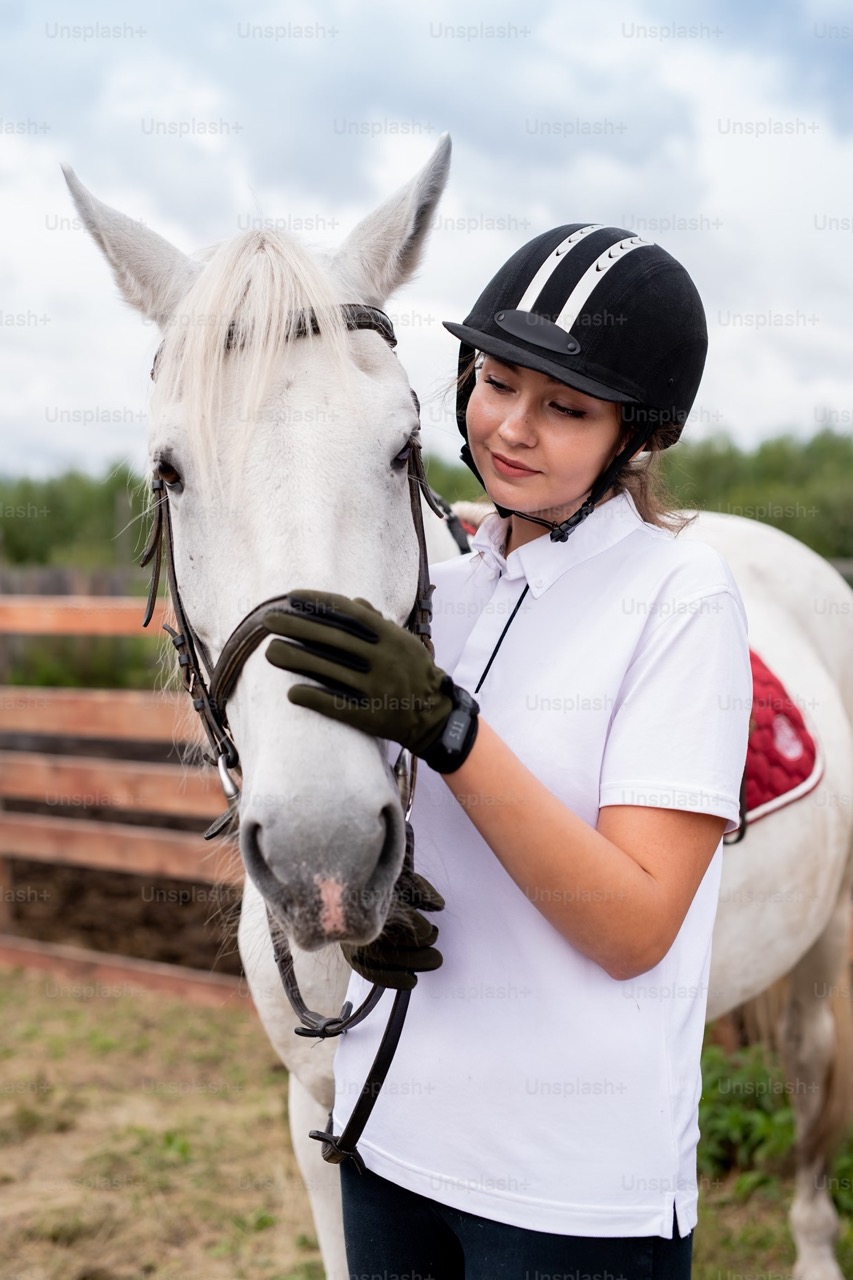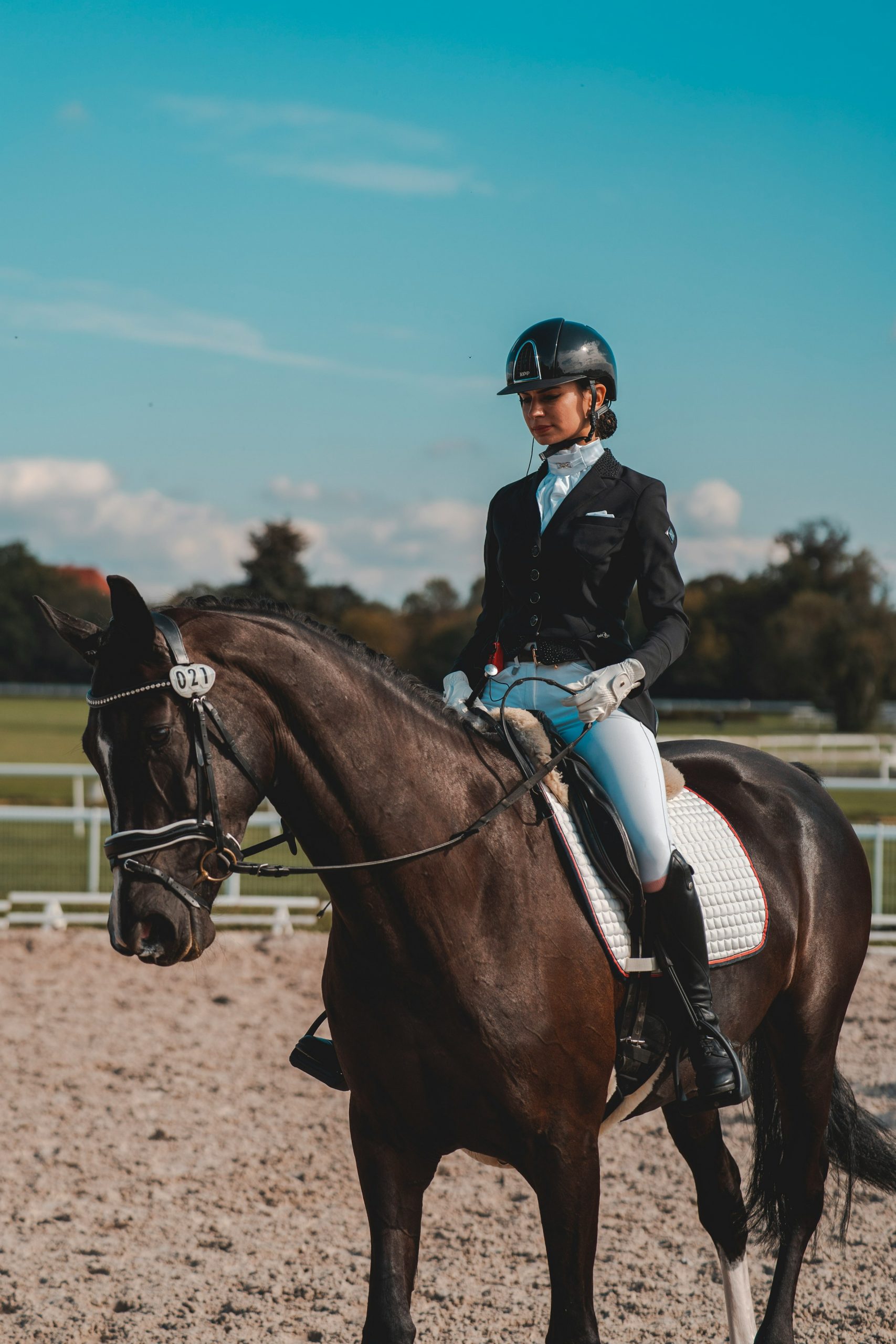With the weather getting ready to change to cooler temps in a lot of the country, that means horses might have more energy, which sometimes means extra exuberance under saddle.
This seasonal shift underscores the importance of being well-prepared for any unplanned dismounts, making helmet safety and regular checks more crucial than ever.
One of the most critical elements of rider safety is the helmet. Ensuring that your helmet is in good condition and adheres to current safety standards can be the difference between a minor incident and severe injury. It’s essential to regularly check your helmet’s condition and understand when it’s time to replace it.
 Regular Helmet Checks: Ensuring Safety Before Every Ride
Regular Helmet Checks: Ensuring Safety Before Every Ride
Every time you prepare for a ride, a quick but thorough check of your helmet should be part of your routine. Look for signs of wear and tear such as cracks in the outer shell, damage to the retention straps, or deterioration inside the helmet where the padding is. Even if a helmet looks fine externally, the internal materials degrade over time and with use, losing their effectiveness in protecting your head.
It’s crucial to examine your helmet after any incident where your head has made contact with the ground or another object. Impacts can compromise the structural integrity of the helmet, often in ways that aren’t visibly obvious.
Replace After a Fall: Why a New Helmet Is Necessary
The materials used in most riding helmets are designed to absorb impact by partially destroying themselves. Even if there is no visible damage, the helmet may no longer provide adequate protection. This is why the standard advice is to replace your helmet after any significant impact, even a drop from a significant height onto a hard surface.
Furthermore, most helmet manufacturers recommend replacing your helmet every five years. The glues, resins, and other materials used in helmet construction can degrade over time, especially with exposure to heat, cold, and sunlight. Regular replacements ensure that the helmet’s materials are in optimal condition to protect you.
Manufacturer’s Recommendations: Adhering to Standards
Adherence to the manufacturer’s replacement guidelines is not just about following rules—it’s about ensuring that the safety technology encasing your head is as up-to-date and as effective as possible. Helmet technology continues to evolve, and standards are regularly updated to reflect new research findings and advancements in materials technology.

Manufacturers conduct extensive testing on helmets before putting them on the market, ensuring they meet specific safety standards. These tests are based on the assumption that the helmet is relatively new and in good condition. As the helmet ages, its ability to meet these standards can diminish, which is why adhering to the recommended timeline for replacement is crucial.
Conclusion: A Small Investment for Major Safety
While the cost of replacing helmets can add up, it pales in comparison to the potential medical costs and long-term consequences of a head injury. Investing in a quality helmet, regularly checking it for signs of wear, and adhering to recommended replacement schedules are essential steps every rider should take to ensure their safety. Remember, when it comes to protective gear, especially helmets, newer is always better.
Every ride presents its risks, and while you can’t eliminate all danger from horse riding, you can manage it effectively by ensuring that your most important piece of safety equipment is always in top condition.
Safety Starts with the Right Protection—for You and Your Horse!
Wearing a helmet is essential for rider safety, just like a secure fence is essential for your horse’s protection. At Ramm Fence, we provide high-quality, horse-safe fencing designed to prevent injuries and create a safe environment for your equine companion.
🐴 Protect what matters most! Explore Our Horse Fencing Solutions and upgrade your farm’s safety today.



